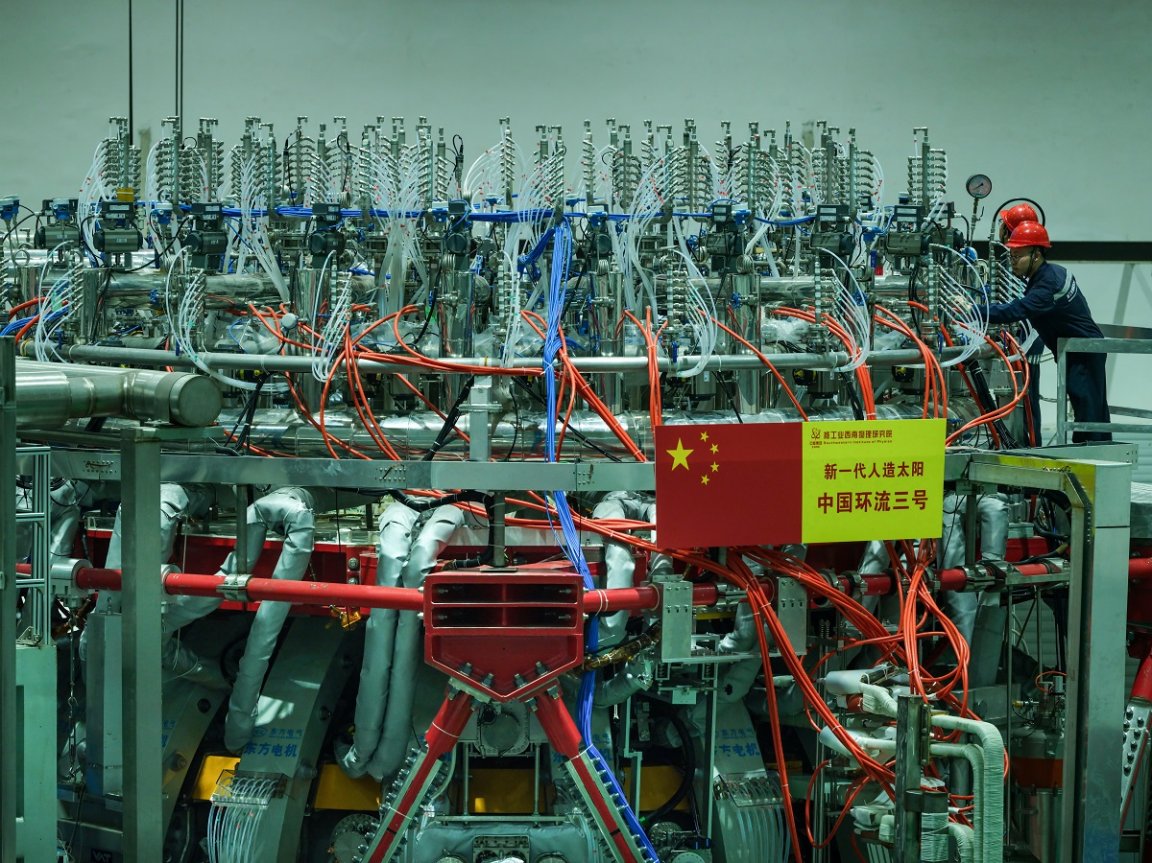
In a move straight out of a Bond film, China seems to be building a massive laser-fired nuclear facility in Mianyang, a major science and research city in Sichuan province.
Recently-released satellite imagery appears to show a research compound containing four large laser bays organized around one “target chamber,” along with a handful of auxiliary buildings.
Reuters reports that analysts with CNA Corp — a research group funded by the US Department of Navy — who viewed the images say the target chamber will likely channel the power of the four laser bays to fuse hydrogen atoms together in the nuclear process known as fusion.
The Mianyang facility could have a variety of uses, from the development of clean energy to the testing of nuclear weapons without the need for thermonuclear detonation, a practice China and the US have agreed to halt.
Experimental fusion reactors aren’t uncommon, though. The United States has been operating a similar site known as the National Ignition Facility in California since 2022, along with many other countries and startups; in fact, the United States and China are already partners, along with other international cohorts, on a massive experimental reactor in France called ITER, which is widely viewed as the most promising initiative in the still-elusive development of practical fusion power generation.
This isn’t the first time that China has made headlines for its domestic pursuit of fusion power, though.
Just weeks ago, researchers with the Institute of Plasma Physics under the Chinese Academy of Sciences (ASIPP) claimed to have set a new record by containing a slurry of high-energy plasma for over 17 minutes in a facility called the Experimental Advanced Superconducting Tokamak (EAST), also known as the “Artificial Sun.” The accomplishment more than doubled the previous record for sustained fusion reaction, also set by EAST. (That reactor is pictured at the top of this article.)
The record-breaking test is the most recent development in the global fusion race, a multi-billion dollar competition to be the first to develop a clean and nearly limitless alternative to nuclear fission, which produces hazardous waste, among other dangers.
The race to clean energy has been exacerbated recently by the huge energy demands of AI facilities — a connection that hasn’t gone unnoticed by AI execs including Sam Altman, who claims that his own fusion startup, Helion, is bearing down on a practical solution — though that may be starting to change as more efficient AI models hit the space.
While some experts have urged patience when it comes to fusion expectations, China’s latest facility is a sign that the race is still on to find the Holy Grail of energy.
More on nuclear power: Trump’s Tariffs Poised to Wreck Nuclear Power